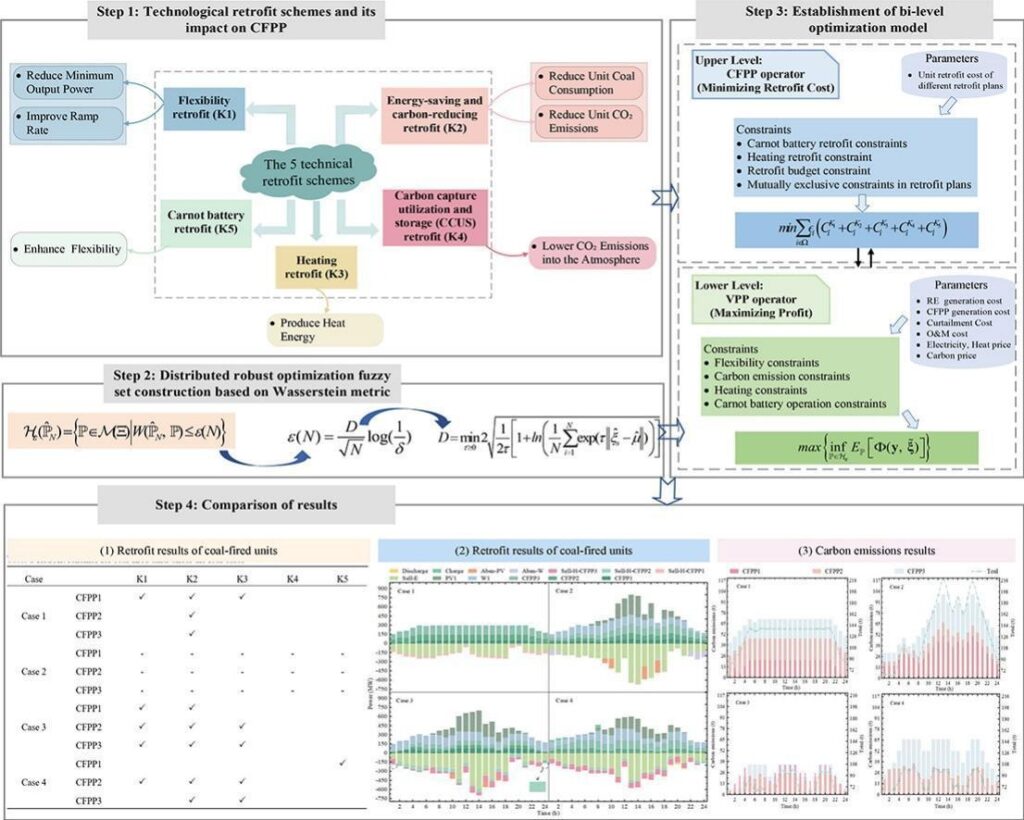Summary
This Energy Economics study examines whether coordinating coal‑fired power plant retrofits with renewables via a virtual power plant (VPP) increases plant owners’ willingness to transition and improves system outcomes. Using a Stackelberg bi‑level model with distributionally robust optimization (Wasserstein metric), the authors co‑optimize coal retrofit choices (flexibility, heating, energy‑saving, CCUS, Carnot battery) and VPP dispatch under renewable uncertainty for a case in Datong, Shanxi.
Simulations show coordination via a VPP can raise total system revenue 3.29×, coal plant revenue 2.47×, and cut carbon emissions by about 29.95% versus an uncoordinated case, while acknowledging a 12.06% revenue reduction when renewable output uncertainty is explicitly considered.
Repower introduction
Replacing coal with clean, flexible assets is not only a technical challenge but also an alignment problem between operators and the power system. This research shows that a virtual power plant can serve as the coordination layer that aligns retrofit decisions at coal plants with real‑time renewable operations, unlocking both higher revenues and deeper emissions cuts in a real Chinese setting.

Key findings
- Transition willingness rises when coal retrofit decisions are coordinated with renewable operations through a VPP acting as a neutral intermediary.
- A Stackelberg bi‑level formulation captures CFPP (upper‑level retrofit costs) and VPP (lower‑level system revenue) objectives, coupled through dispatch and retrofit performance.
- Distributionally robust optimization (Wasserstein ambiguity sets) handles renewable uncertainty; KKT reformulation yields a tractable single‑level MILP.
- In Datong (Shanxi), coordinated VPP participation increases system revenue ~3.29×, coal plant revenue ~2.47×, and reduces CO2 ~29.95% relative to no‑coupling; modeling renewable uncertainty reduces total revenue by ~12.06% but maintains coordination benefits.
Repower perspective
For coal regions seeking pragmatic decarbonization, coordination layers like VPPs can make retrofits bankable while stabilizing high‑renewable grids. This aligns with Repower’s mission: reuse the grid interconnections, sites, and workforce of coal plants, and repower them—stepwise or fully—to deliver reliable, clean power at speed and scale.